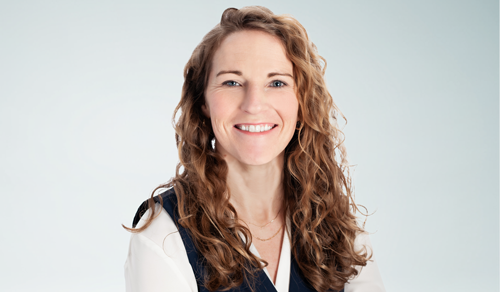The 2021 report, The Future of Time[7], found this desire for a flexible approach in all seven surveyed countries: the U.K., U.S., Australia, New Zealand, France, Germany, and Japan – see Figure 2 below. A Benify survey[8] in Europe found that employers need to enable employees to more easily fold work into their lives, rather than vice versa. This can be as simple as allowing employees to exercise and take regular breaks during the day or offering the option to finish early.
The Buck 2022 Wellbeing and Voluntary Benefits Survey[9] found that 73% of millennials, the largest generation currently in the workforce, would switch to another job offering greater flexibility if their salary and responsibilities remained the same.
The new hybrid and flexible workforce impacts the types of benefits required to meet new and evolving employee needs.
Remote working has changed the value of a number of traditional benefits, such as commuter benefits, free or subsidized meals, and on-site childcare. A survey of HR leaders and C-suite decision-makers in the U.S.[10] revealed that 89% of employers are deprioritizing at least one type of benefit as a result the pandemic’s impact on traditionally centralized workforces. They are not cutting back, but rather trading off: 98% of leaders are introducing new benefits that employees value and will have a greater impact on the way they now work.
This new way of working, and how work and life intersect, also introduces new employee health challenges. These include feelings of disconnection and the risk of prolonged stress, burnout, and depression. The MetLife Employee Benefit Trends study[11] reported that more than 70% of employers predict employee wellbeing will have the greatest impact on the workplace of the future, followed by remote working, and employee mental health, stress, and burnout. Currently, 39% of employees are not offered wellbeing benefits and programs by their employer. What employees need to remain healthy, productive, and engaged within a fluid and decentralized workplace today looks very different from just a few years ago. Employees are now prioritizing mental health programs, virtual healthcare platforms, care programs (for both children and elders), and services that support work-life balance, such as home cleaning or grocery delivery.
The Evolving Workforce
For the first time in history, many workplaces will have four or even five generations working together side by side as Generation Z enters the workforce and traditionalists delay retirement. In 2021, the millennial generation overtook Generation X and baby boomers[12] as the dominant working population between the ages of 30 and 60 in the U.S., and will soon be joined by members of Generation Z.
Different generations have different attitudes and needs around a variety of issues relating to work, including workplace culture, work-life balance, compensation, and benefits. Older employees may place a greater emphasis on traditional wealth and protection benefits such as retirement savings and health insurance. Younger employees may take a more holistic view and prioritize preventive health programs or financial wellness offerings.
Family structures around employees have also changed. The traditional family consisting of a married couple with two children is no longer the norm. The Organisation for Economic Co-operation and Development (OECD) found in The Future of Families to 2030 report[13] that due to a variety of societal trends, such as declining birth and marriage rates and increasing divorce rates, “non-traditional” family structures are becoming traditional. Many OECD nations are projecting increases in the number of one-person households, single-parent families, and couples without children. These changes in family structures have also created a generation where many people are sandwiched between caring for children and caring for elderly parents.
Protection products offered in the workplace were traditionally built to provide the same level of protection to all employees. However, different family structures have different protection needs, reflecting the number of family members able to earn an income and the number of family members requiring care. The same amount of protection may meet or exceed the need of some employees and be inadequate for others.
This diverse product and protection demand creates pressure on employers and insurers to develop solutions that meet all needs and evolve with employees to accommodate every stage of life. The pandemic has only heightened this demand, as employees now place more value on workplace benefits than prior to the pandemic. According to LIMRA-EY research,4 that perception is particularly prominent among millennials, with nearly half (47%) indicating that their benefits are “more valuable” today, as seen in Figure 3 below.
Figure 3: Relative value of insurance benefits before and after COVID-19 pandemic by generation
Looking Ahead
These emerging trends signal a change in expectations from employees around workplace benefits and the need for employers to respond as they compete for talent. Research from LIMRA-EY4 indicates that three-quarters (76%) of employers think their employees will expect a wider variety of benefit options in the future, and this proportion is greater for employers who have more remote employees. Companies will need to balance the desire for additional benefits with the realities of increasing costs and budgets. Employee choice and flexibility will be critical to achieve both goals by allowing personalization of packages to provide those benefits each employee values most. The same LIMRA-EY research shows that, as a result of the pandemic, nearly two-thirds (62%) of employers believe employees will have more influence over benefits decisions in the future.
What solutions are emerging to address the increasing need for flexibility and personalization in benefits, and what must group insurers be ready for? Recent market activity shows momentum across three areas: product solutions, platform solutions, and a distribution trend we call the “retail-ization” of benefits.
- Product Solutions:
Although voluntary products have been around for many years, the pandemic reinforced their value, and both employees and employers are now demanding a wider array of products and services. Employee interest is increasing in protection products, such as cancer, critical illness, accidental death, and hospital indemnity, but also in non-traditional products, such as identity theft, cyber risk, and pet insurance. Insurers are bringing new voluntary products to market to meet employee interest and demand while balancing simplicity and value.
A new product type, the portable product, blends the benefits of both group and individual products. A portable product leverages the spread of risk of the group to offer higher free cover/non-evidence maximums than what the employee would be able to access if purchasing alone. However, if the employee leaves the employer, the product stays with the employee, or “ports,” so long as the individual continues to pay premiums.
- Platform Solutions:
As more product types emerge and program complexity increases, new platforms must be created to support employee selection and employer administration. Brokers, insurers, and third-party providers are meeting this demand with innovative solutions. Insurers are leveraging their existing connections with employees to introduce the concept of voluntary benefits, guide employees through the selection process, and complete the sale through simple online experiences, often connected to an existing employee portal. Brokers and third-party providers are creating benefit marketplaces that allow employers to outsource the selection, administration, and management of a suite of voluntary options for their employees, leveraging scale to further expand the options and features available. Some marketplaces facilitate a fully defined contribution benefits approach for employers, allowing them to set a budget for each employee and letting employees select the benefits that matter most to them.
- “Retail-ization” of Benefits:
The above two trends show that the workplace is a trusted source of insurance information for many employees and an effective channel to help close the protection gap. However, many employers do not have the resources to take on additional administration or vendor management. The “retail-ization” of benefits refers to the recent trend of channel-agnostic, tech-enabled retail insurance distributors entering the benefits space and integrating their purchase journey into another employee experience, using the workplace as an alternative distribution channel. Leads stem from another employee experience – wellness platform, benefits information portal, employee onboarding, annual enrollment – often when insurance is top of mind. Employees can purchase a retail insurance product that meets their needs and stays with them after leaving the employer from an insurer vetted and trusted by the employer.
The future of work will be flexible, and benefits are no exception. Increasingly, employees expect benefits that are relevant and personalized to their unique and changing needs. To compete for talent, employers must seek solutions to meet these needs while balancing the challenges of budget limitations and administrative complexity. Group insurers must be ready to plug into platforms that meet employees where they are with a suite of flexible products to support both employee and employer goals.




